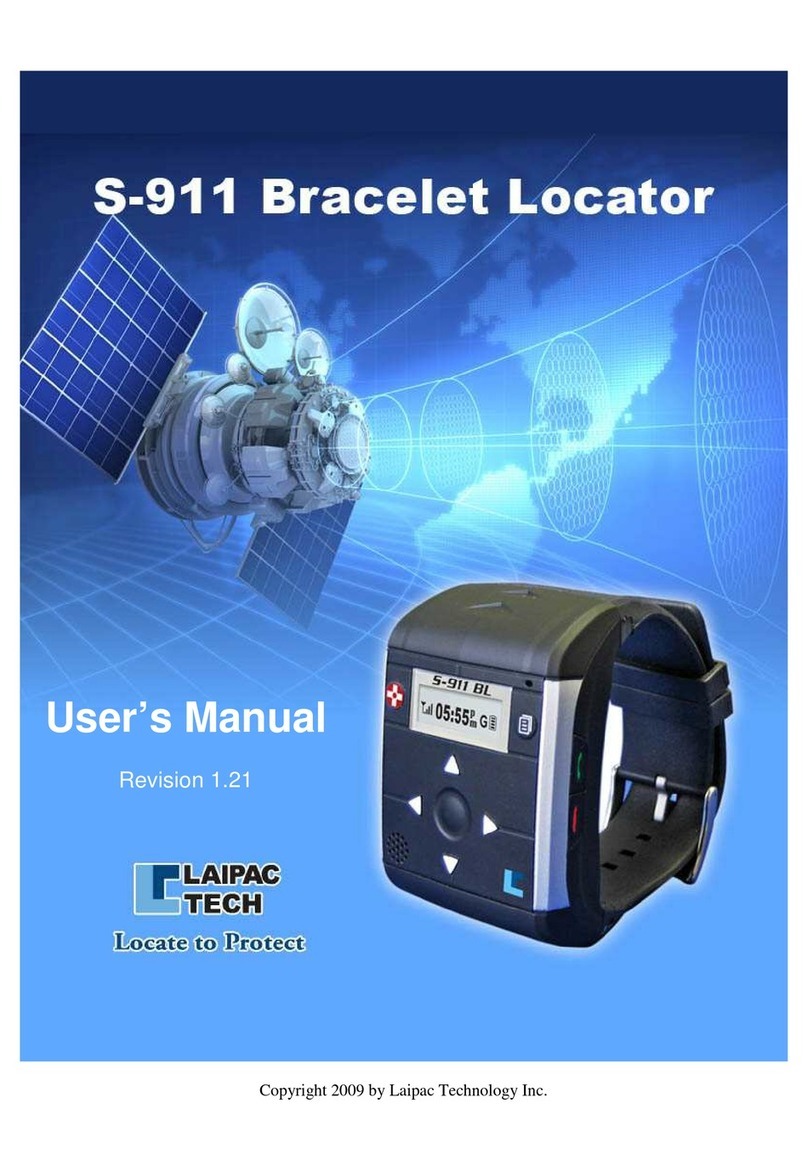
Laipac Technology Inc. StarFinder Lite User’s Manual & Reference Guide
© 2012-2021 by Laipac Technology Inc. All Rights Reserved. Page 2
Federal Communications Commission (FCC) Statement
This equipment has been tested and found to comply with the limits for a Class B digital device,
pursuant to part 15 of the FCC rules. These limits are designed to provide reasonable protection
against harmful interference in a residential installation. This equipment generates, uses, and
can radiate radio frequency energy and, if not installed and used in accordance with the
instructions, may cause harmful interference to radio communications. However, there is no
guarantee that interference will not occur in a particular installation. If this equipment does
cause harmful interference to radio or television reception, which can be determined by turning
the equipment off and on, the user is encouraged to try to correct the interference by one or
more of the following measures:
-Reorient or relocate the receiving antenna.
-Increase the separation between the equipment and receiver.
-Consult the dealer or an experienced installer for help.
You are cautioned that changes or modifications not expressly approved by the party
responsible for compliance could void your authority to operate the equipment.
FCC RF Radiation Exposure Statement:
FCC RF Radiation Exposure Statement:FCC RF Radiation Exposure Statement:
FCC RF Radiation Exposure Statement:
1. This Transmitter must not be co-located or operating in conjunction with any other antenna or
transmitter.
2. This equipment complies with FCC RF radiation exposure limits set forth for an uncontrolled
environment.
3. This equipment should be installed and operated with a minimum distance of 20 centimetres
between the radiator and your body.
CE Marking
This device has been tested to and conforms to the regulatory requirements of the European Union
and has attained CE Marking. The CE Mark is a conformity marking consisting of the letters
“CE”. The CE Mark applies to products regulated by certain European health, safety and
environmental protection legislation. The CE Mark is obligatory for productions it applies to: the
manufacture affixes the marking in order to be allowed to sell his product in the European market.
This product conforms to the essential requirements of the R&TTE directive 1999/5/EC in order to
attain CE Marking. A notified body has determined that this device has properly demonstrated that
the requirements of the directive have been met and has issued a favorable certificate of expert
opinion. As such the device will bear the notified body number 0560 after the CE mark.
The CE Marking is not a quality mark. Foremost, it refers to the safety rather than to the quality of
a product. Secondly, CE Marking is mandatory for the product it applies to, whereas most quality
markings are voluntary.
Marking: The product shall bear the CE mark, the notified body number(s) as depicted to the right.
CE0560.




































